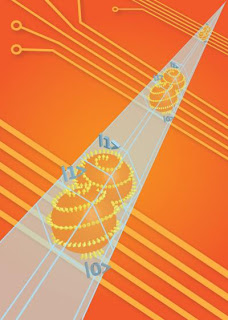Scientists from the Kavli Institute of Nanoscience at Delft University of Technology and Eindhoven University of Technology in The Netherlands have succeeded in controlling the building blocks of a future super-fast quantum computer. They are now able to manipulate these building blocks (qubits) with electrical rather than magnetic fields, as has been the common practice up till now. They have also been able to embed these qubits into semiconductor nanowires. The scientists' findings have been published in the current issue of the science journal Nature (23 December).
Spin
A qubit is the building block of a possible, future quantum computer, which would far outstrip current computers in terms of speed. One way to make a qubit is to trap a single electron in semiconductor material. A qubit can, just like a normal computer bit, adopt the states '0' and '1'. This is achieved by using the spin of an electron, which is generated by spinning the electron on its axis. The electron can spin in two directions (representing the '0' state and the '1' state).
Electrical instead of magnetic
Until now, the spin of an electron has been controlled by magnetic fields. However, these field are extremely difficult to generate on a chip.
Contact: Leo Kouwenhoven l.p.kouwenhoven@tudelft.nl 31-152-786-064 Delft University of Technology















No comments:
Post a Comment